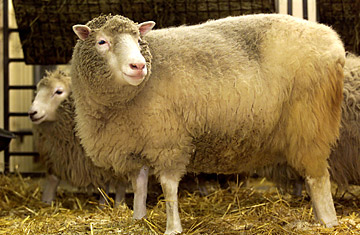
On Nov. 19, scientists from Penn State University announced that they had succeeded in piecing together the majority of the woolly mammoth’s genome, bringing the world one step closer to the Jurassic Park fantasy of using recovered DNA to bring an extinct species back to a shaggy, lumbering existence.
The wonders of eBay allowed the scientists to purchase a $130 bag of 20,000-year-old woolly-mammoth hair from a vendor in Moscow, and the wonders of science allowed them to extract the mammoth’s genetic information in the most successful attempt to date to sequence an extinct animal’s DNA. DNA in general breaks down after 60,000 years or so, making the possibility of a real Jurassic Park scenario — complete with flying pterodons and bloodthirsty tyrannosaurs — remote. Still, scientists see the completion of the genome as the first step to uncovering and understanding the reasons behind the mammoths’ extinction, and the effort has brought the cloning question back to the public’s mind in a (ahem) mammoth way.
Though Dolly the sheep was the first clone to be shoved into the limelight, in 1996, the process of human-directed cloning has existed since 1952. In that year, American researchers Robert Briggs and Thomas King successfully removed the nucleus of a tadpole’s embryonic cell and transferred it to a donor cell, cloning 27 tadpoles in the experiment. This groundbreaking achievement landed the scientists the internationally lauded Charles Leopold Mayer Prize of the Acadmie des Sciences, making them the first Americans in history to receive the award. (Read TIME’s first story about Dolly.)
Since Briggs and King’s discovery, a veritable Noah’s Ark of clones has been created, ranging from fish in 1963 to horses in 2003. Dolly’s birth, at the Roslin Institute in Scotland, marked the first successful cloning of a mammal from an adult cell, proving that a complete animal could be grown from the DNA contained in cells from just about any part of another.
Attempts at cloning haven’t stopped at the nonhuman animal kingdom: scientists have long speculated about cloning humans as well, but for the most part, ethical considerations have prevented any such notions from being put into practice. President George W. Bush urged Congress to enact legislation banning human cloning in 2002 after being “deeply troubled” by rumors that a Canada-based UFO cult had announced the birth of a successfully cloned baby girl. Though the claims were never substantiated, Congress passed the Human Cloning Prohibition Act in 2003. Congresswoman Sue Myrick, who supported the act, claimed that “anything other than a ban would license the most ghoulish and dangerous enterprise in human history.” Religious groups also came out in force against human cloning; science was threatening to disrupt the natural order of life, they said, and researchers “playing God” were treading on dangerous existential territory. A representative of the U.S. Conference of Catholic Bishops hailed the passing of the bill, stating, “This vote reflects America’s rejection of the notion that human life is a commodity to be created for experimentation.”
Cloning has generated controversy outside of ethics questions as well — or at least, outside of these particular ethics questions. In 2004, South Korean researcher Hwang Woo Suk shot to fame after claims that his team had successfully extracted potentially disease-curing stem cells from a cloned human embryo. However, mere months later, Hwang’s reputation dissolved after a Seoul National University panel concluded that much of his research was “intentionally fabricated.” Hwang was accused of doctoring pictures of his supposed patient-specific stem-cell lines and was forced to resign. Though the controversy stunned South Korea, the nation resumed its cloning research, and in 2008 it unveiled seven Labrador retrievers, cloned from a drug-sniffing canine, that shared her superior narcotic-detecting abilities.
The genetic sequencing of the woolly mammoth, meanwhile, raises the similarly fraught but increasingly realistic possibility of cloning extinct animals, a process that Jurassic Park director Steven Spielberg has called “the science of eventuality.” Still, scientist Stephan Schuster, who led the team at Penn State, isn’t holding his breath. “What I’m trying to say is that there is a workable route to do that, but it is at this time technically, and cost-wise and time-wise, not feasible.” Guess we’ll just have to wait for Jurassic Park 4.